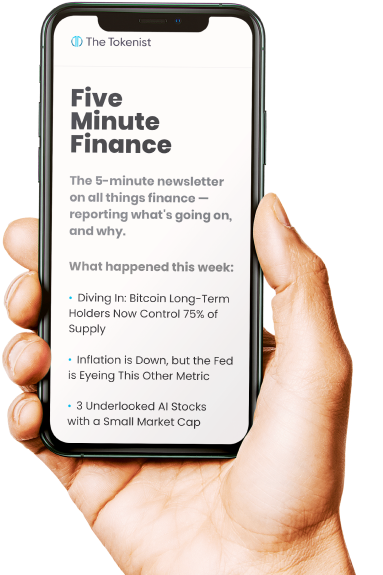
Figma Down 54%: Can AI Save the Story?
It has been three months since the design software company Figma began trading on the New York Stock Exchange under the ticker FIG. To put it mildly, shareholders are somewhat anxious about FIG’s future stock performance.
At the time, on July 31st, Figma’s IPO achieved a massive valuation of $19.3 billion, with initial FIG pricing at $33 per share. However, shortly after its NYSE debut, FIG shares surged to $142.92, a 4x increase that pushed its valuation close to $68 billion. This reflected prior Bloomberg reporting that the Figma IPO had been oversubscribed 40x.
That was not entirely surprising. Initial public offerings (IPOs) launch without the company’s trading history, making it difficult to anchor expectations. Moreover, leveraging the initial hype and a limited float, insider investors tend to lock up profits, resulting in a rapid selloff cascade. With three months of trading now behind it, FIG stock is down 54%, currently priced at $48.73 per share. Let’s examine the company’s prospects and potential valuation moving forward.
Was It Wise to Invest in Adobe’s Competitor?
Both Adobe (ADBE) and Figma (FIG) occupy the niche of interactive product design, offering Software-as-a-Service (SaaS) solutions. Most customers for both companies come from marketing, social media, branding, graphic design, and the education sector. As the dominant player in this market, Adobe offered $20 billion to acquire Figma in 2022, nearly matching the company’s IPO valuation. However, the deal was canceled in late 2023 due to regulatory scrutiny.
From that cancellation, Figma greatly benefited as Adobe had to pay a $1 billion reverse termination fee. Investors have been particularly excited about Figma’s IPO due to its collaborative approach to product development. Namely, multiple users can work simultaneously on the same project, making changes visible as if they were working on a Google document.
Figma further integrated tools like Slack, Jira, and Adobe XD to enhance the workflow pipeline. Additionally, Figma operates a freemium model to attract users and expand its customer base. All of these ingredients would suggest that Figma could become as widespread as Google Workspace.
However, both Adobe and Figma face peril from that very same direction. Specifically, Google’s Nano Banana (Gemini 2.5 Flash Image), launched in late August, enables users to prompt AI to edit images as easily as they can generate them. This is a significant milestone, as generating content over and over again to luck out on the desired effect is not very conducive for professional use.
In fact, in June’s coverage of Adobe, we posited that granular control of content editing would remain superior to AI-powered generation, especially since Adobe has its own competent Firefly model. Yet, if the trend of text-to-edit continues, both companies’ long-term valuations could hinge less on their design pedigree and more on how swiftly they pivot to AI-native workflows.
At a bare minimum, if Google integrates more of such features, considering the company’s overwhelming reach, the incentive to adopt Figma products for basic use cases would diminish.
Join our Telegram group and never miss a breaking digital asset story.
Figma’s AI Positioning Strengthens
Now that we understand why AI is such a big deal for both Adobe and Figma, it makes sense that the latter just recently, on Thursday, announced the acquisition of Weavy. The Israeli AI startup, launched a year ago, was acquired by Figma for $200 million.
Weavy weaves existing AI models such as Sora, Veo, and the aforementioned Nano Banana to generate primitives. Users can then combine them to create a cohesive output, including color grading, lighting adjustments, and masking.
This is the exact ingredient Figma needs to stay relevant against future AI advances, as it positions itself as an AI-agnostic layer. More importantly, by embedding AI-driven primitives directly into its collaborative ecosystem, Figma is raising its moat drawbridge.
Figma’s Price Targets
Over the last 12 months, Figma generated $294.3 million in free cash flow (FCF). With a year-over-year revenue growth of 41%, reaching $249.6 million as of Q2, analysts expect an annual FCF target of $367.5 million by 2029.
At this stage of the business, Figma’s discounted cash flow (DCF) model is challenging to pin down. However, it is fair to say that the stock is overvalued, given its price-to-earnings (P/E) ratio of 261.06 for the trailing twelve months (TTM). For comparison, Adobe’s P/E is 21.10 TTM.
Over the last three months, ADBE stock has been down 5.5%, while FIG shares have lost 54% of their value. Yet, according to the Wall Street Journal’s forecasting, most analysts remain largely optimistic, with zero sells, eight holds, and four buys.
This puts the average FIG price target at $67.57 per share. Even the bottom outlook is higher than the current price level, at $49, while the bullish ceiling stands at $85 per share.
Disclaimer: The author does not hold or have a position in any securities discussed in the article. All stock prices were quoted at the time of writing.




